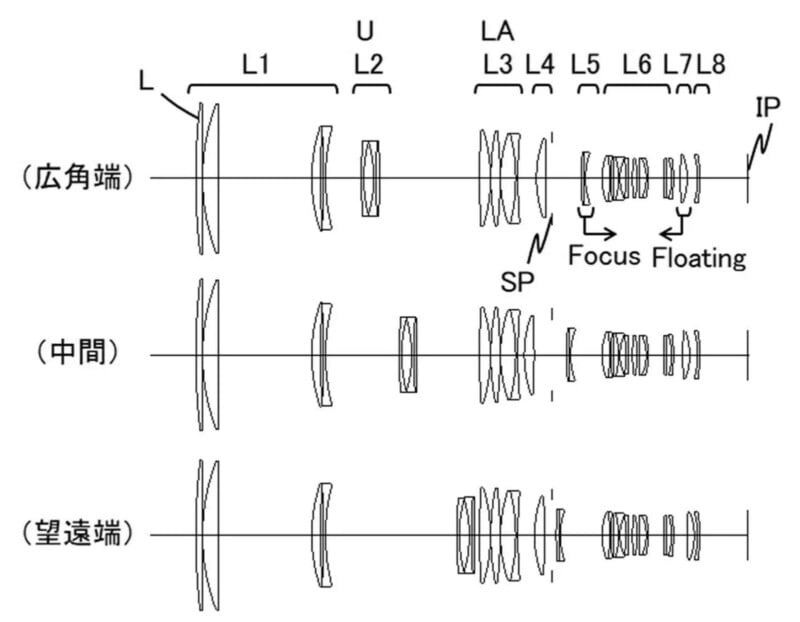Canon Files Patents for Five Unique Zoom Lenses
![]()
Some very interesting Canon lens patents have been published in Japan, arriving just a few weeks after a Canon executive said the company is developing new RF lenses “no one can imagine yet.”
It is worth adding vital context before looking at the five patents published this week. As is always the case with patents, there is no guarantee that any described products will ever see the light of day. Companies, including Canon, constantly file new patents, and only some of the described items and technologies are ever implemented in a real-world product or service.
With that essential caveat aside, what has Canon patented this time? As reported by Asobinet, the Japanese camera company’s patents for 15-28mm f/2.8 and 17-30mm f/2.8 lenses have been granted by Japanese regulators. These patents were submitted in January 2023 and officially published today, July 30. The documentation outlines a “compact, wide-angle zoom lens” with a fast, constant f/2.8 aperture.

In Canon’s RF system it already has RF 14-35mm f/4 L IS USM and RF 15-35mm f/2.8 L IS USM lenses, so presumably, the new patents relate to a potential wide-angle lens that combines the compact and lightweight design of the RF 14-35mm f/4 with the speed of the RF 15-35mm f/2.8, albeit with slightly less range than either of the existing lenses.
A 15-28mm f/2.8 or 17-30mm f/2.8 would be all-new designs for Canon, but additional patents better fit Canon’s claim that it’s developing lenses nobody has imagined yet. Asobinet also detailed three more new Canon patents, and they are all for telephoto zoom lenses.
These patents were filed just one day before the wide-angle zoom patents detailed above and were published in Japan yesterday, July 29. They detail a trio of designs for 70-300mm f/4, 300-600mm f/2.8-4.5, and 400-600mm f/2.8-4 lenses.

Canon says there has been increased demand for telephoto zoom lenses that feature fast apertures and high optical performance yet are small and compact. The patents rely on clever optical designs to maintain fast apertures in a relatively small form factor.
While a 70-300mm f/4 lens is a novel idea, the two longer zoom lenses may prove more compelling to sports and wildlife photographers. Canon has shown its ability to develop unique, high-performance telephoto zoom lenses for the EOS R system already, including with the RF 100-300mm f/2.8 L IS USM — a first-of-its-kind optic.
If, and the word “if” is doing significant heavy lifting, Canon released a 300-600mm f/2.8-4.5, photographers would have 100 to 600mm covered at f/2.8-4.5 with just two lenses and no gaps. Granted, a 400-600mm f/2.8-4 would achieve almost the same coverage, albeit with a faster aperture range.
The mirrorless age has included a lot of novel lenses across all systems and focal length ranges. Still, perhaps no segment has enjoyed as much fascinating engineering as the telephoto range. Beyond Canon’s interesting RF 100-300mm lens, it has also released RF 800mm f/5.6 and RF 1200mm f/5.6 exotic prime lenses, and the RF 200-800mm f/6.3-9 zoom. The competition has been busy, too, with Nikon launching 180-600mm f/5.6-6.3, 400mm f/4.5, 600mm f/6.3, and 800mm f/6.3 lenses for the Nikon Z system.
Canon shooters are undoubtedly crossing their fingers that these interesting new patents result in a new lens or two at some point, although only time will tell.
Image credits: Canon